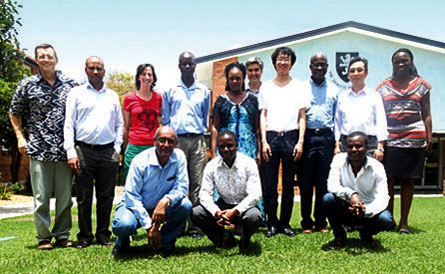Regional Statistics Course – module 1
Generation, analysis and interpretation of experimental and genetic designs applied to plant breeding
General objectives of the course
Through lectures, practicals and discussion, you will learn:
- Basic experimental designs theory
- Randomized complete blocks, incomplete blocks, augmented and partially-replicated designs
- Analysis of variance, fi xed and mixed models
- Design and analysis of multi-environment trials, including modeling genotype-by-environment interaction
- Spatial analysis of individual and combined experiments
- Genetic designs, selection indices and genomic breeding values (GEBVs)
- Use of statistical software including SAS, GenStat, R, and ASReml
Primary lecturers
Dr. Mateo Vargas, Genetic Resources Program, CIMMYT;
E-mail: vargas_mateo@hotmail.com
Dr. Gregorio Alvarado, Genetic Resources Program, CIMMYT;
E-mail: G.Alvarado@cgiar.org
Program
I. Randomized complete blocks designs (RCBD) and multiple comparison procedures
Objectives:
- Identify the basic components of variation in a randomized complete blocks design.
- Analyze information generated from fi eld experiments using RCBD and interpret the results of analysis
Contents:
- Advantages and disadvantages, fixed effect models
- Generation of designs using SAS
- Statistical model and Analysis of Variance
- Example of analysis and interpretation using SAS, GENSTAT, R
- Multiple Comparison Tests: Least Signifi cant Diff erence(LSD), Honest Signifi cant Diff erence (Tukey), Scheffé
II. Incomplete blocks designs or lattices
Objectives:
- Identify the basic components of variation in an incomplete blocks design (IBD), recovery of intrablock and interblock information
- Increase the precision of experiments using covariance structures with the purpose of extract correlation sources between experimental plots
- Analyze information generated from experiments in agree with the former designs and interpret the results
Contents:
- Incomplete Block Designs (BIBDs) or Lattices
- Advantages of Linear Mixed Models
- Alpha Lattice Designs: Generation using AlphaWin, DiGGer
- Statistical modeling with and without covariate(s)
- Example of analysis and interpretation using SAS, GENSTAT, R
- Best Linear Unbiased Estimators (BLUEs), LSD, Grand Mean and Coeffi cient of Variation using the Standard Errors of Diff erences (SED)
- Best Linear Unbiased Predictors (BLUPs), Heritability in Broad Sense (H2) and Genetic Correlations
III. Augmented designs and spatial analysis
Objectives:
- Identify the basic characteristics and evaluate the advantages of the Augmented Designs and the Spatial Analysis
- Analyze information generated from experiments based on Augmented Designs and Spatial Analysis, interpretation of the results
Contents:
- Basic concepts and properties of augmented designs
- Basic concepts and properties of spatial analysis
- Generation of augmented designs using DiGGer, GENSTAT and ASREML
- Analysis and Interpretation of augmented designs and spatial analysis using SAS, GENSTAT and ASREML
- Analysis and Interpretation of augmented designs and spatial analysis using SAS, GENSTAT and ASREML
IV. Multi Environment trials
Objectives:
- Increase validation space of conclusions by mean of evaluating trials among various locations, years or combinations between them and make a best selection of genotypes
- Estimate and interpret the genetic parameters of evaluated populations at multi-environment trials
- Model and interpret the Genotype by Environment interaction using diff erent strategies
- Introduce external information of environmental and/ or genotypic covariates for assist in the interpretation of genotype by environment interaction
- Analyze information generated from multienvironment trials using diff erent software and make the interpetation of analysis outputs
Contents:
- Combined analysis across multi trials:
- Statistical models
- Estimation of BLUEs and BLUPs with and without covariate(s)
- LSD, Grand Mean and Coeffi cient of Variation using the Standard Errors of diff erences (SED)
- Heritability in Broad Sense (H2 ) and Genetic Correlations among locations
- Dendrogram and PCA Biplot of genetic correlations matrix among locations
- Demo of the META: Suite of SAS programs which performs everyone of the all before trials under diff erent conditions: Randomized Complete Blocks Designs, Incomplete Block Designs with and without covariate(s), Individual and Combined Analyses
- Statistical models for the interpretation of the genotype by environment interaction: AMMI, SREG, GREG, SHMM
- Statistical models incorporating environmental and/ or genotypic covariates
- Partial least Squares regression (PLS)
- Factorial regression (FR)
- Modelling with structural equations
- Practical using SAS, GENSTAT, R
V. Genetic designs, selection indices and genomic breeding values (GEBVs)
A. Genetic designs
Objectives:
- Increase the knowledge of basic issues of genetic plant breeding using statistical software
- Strategies for comprehension of genetic plant breeding using genetic designs
Contents:
- Importance of genetic plant breeding
- A genetic plant breeding defi nition
- Challenges and needs of the plant breeders
- Genetic designs
- How to design a genetic mating scheme, commonly mating designs
- Single-Pair mating
- North Carolina I
- North Carolina II
- Line by Tester
- Diallel designs
- Use of statistical software for analysis of genetic designs
- Recent advances in genetic designs
B. Phenotypic selection indices: Smith, ESIM, Kempthorne and Nordskog, RESIM
C. Genomic selection indices: Lande and Thompson, Lange and Whitaker
D. Genomic breeding values (GEBVs)
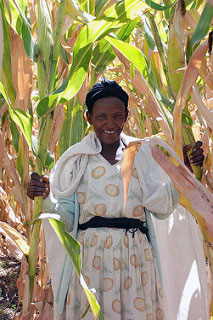 The Nutritious Maize for Ethiopia (NuME) aims to develop and promote quality protein maize (QPM) in the major maize growing areas of Ethiopia, including the highlands and the dry lands, to improve nutritional status of children. The project has a strong gender component, ensuring women’s full participation in all activities and equal share of benefits, which was discussed during a Gender Analysis and Strategy workshop at the
The Nutritious Maize for Ethiopia (NuME) aims to develop and promote quality protein maize (QPM) in the major maize growing areas of Ethiopia, including the highlands and the dry lands, to improve nutritional status of children. The project has a strong gender component, ensuring women’s full participation in all activities and equal share of benefits, which was discussed during a Gender Analysis and Strategy workshop at the 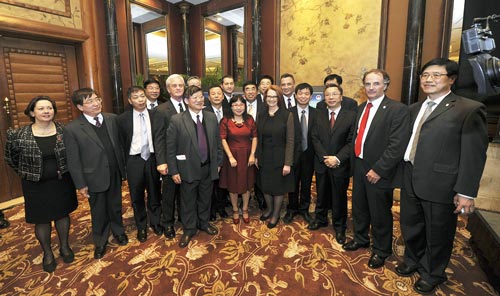 The Chinese Academy of Agricultural Sciences (CAAS)
The Chinese Academy of Agricultural Sciences (CAAS)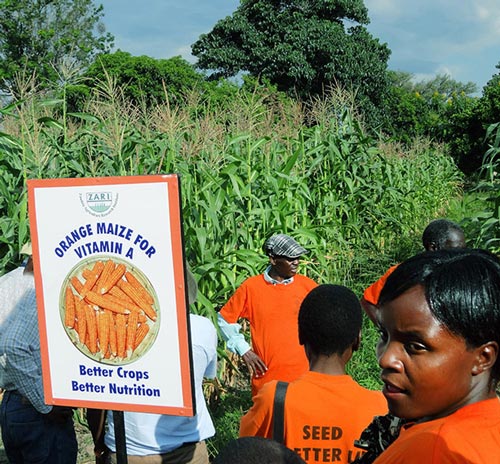 With over 50% of Zambian children under five vitamin A deficient, Zambia faces a major public health problem. This has resulted in several government intervention programs including vitamin A supplementation and sugar fortification, efforts which will soon be complemented by the release of three orange maize hybrids with higher levels of provitamin A carotenoids (compounds converted to vitamin A when consumed) developed by CIMMYT in collaboration with the Zambia Agriculture Research Institute (
With over 50% of Zambian children under five vitamin A deficient, Zambia faces a major public health problem. This has resulted in several government intervention programs including vitamin A supplementation and sugar fortification, efforts which will soon be complemented by the release of three orange maize hybrids with higher levels of provitamin A carotenoids (compounds converted to vitamin A when consumed) developed by CIMMYT in collaboration with the Zambia Agriculture Research Institute (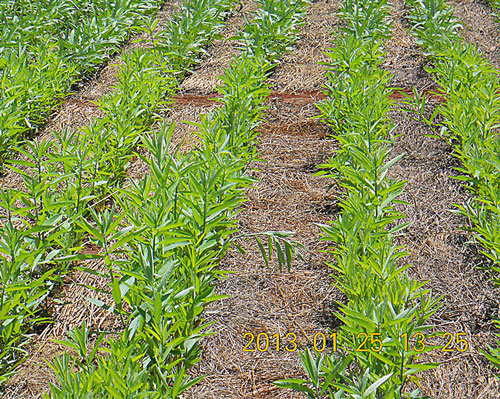 In 2012, three CG centers—the International Livestock Research Institute (
In 2012, three CG centers—the International Livestock Research Institute (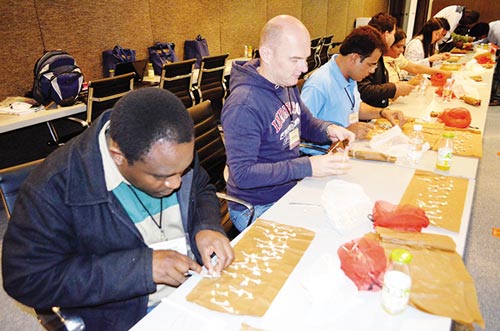 To expand awareness on DH-based breeding and build the capacity of national partners, the CIMMYT Global Maize Program organized the second international training course on doubled haploid technology in maize breeding at El Batán, Mexico, from 4-8 March 2013. Sixteen participants from 10 countries (Ethiopia, India, Kenya, Mexico, Netherlands, Peru, Philippines, South Korea, Thailand, and Zimbabwe) attended the course that provided both theoretical and practical exposure to the DH technology and its applications in maize breeding.
To expand awareness on DH-based breeding and build the capacity of national partners, the CIMMYT Global Maize Program organized the second international training course on doubled haploid technology in maize breeding at El Batán, Mexico, from 4-8 March 2013. Sixteen participants from 10 countries (Ethiopia, India, Kenya, Mexico, Netherlands, Peru, Philippines, South Korea, Thailand, and Zimbabwe) attended the course that provided both theoretical and practical exposure to the DH technology and its applications in maize breeding.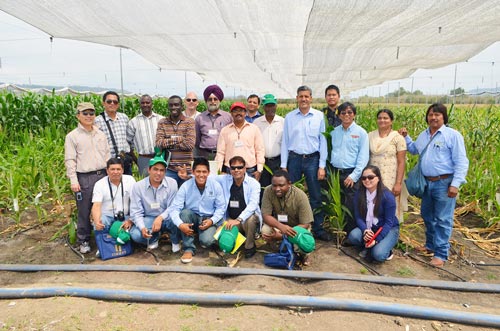
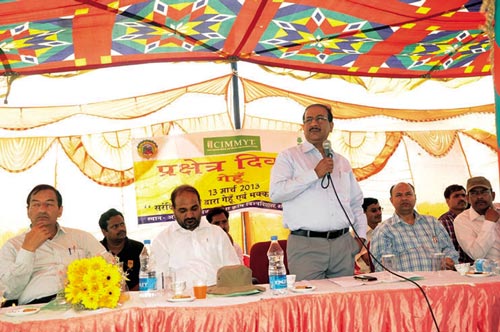 On 13 March 2013, a social learning exercise was organized jointly by Birsa Agricultural University (
On 13 March 2013, a social learning exercise was organized jointly by Birsa Agricultural University (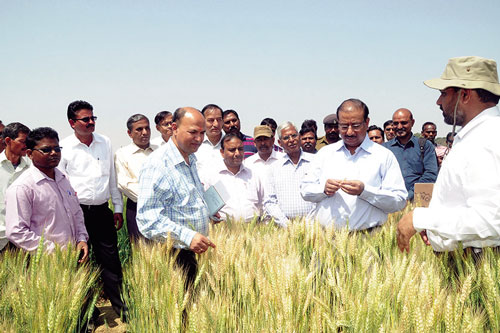 The project aims to conduct farmer participatory trials to eventually achieve mass adoption in the villages of Jharkhand. As the awareness of the project’s successes increases, so does the demand for CA technology. “Local machine manufacturers are encouraged to come forward to assemble and fabricate CA machines adapted to local farmers’ needs,” AK Singh reassured the participants. Further assurance on efficient dissemination of the knowledge and technology among farmers was provided by Chaudhary: “SAMETI utilizes a strong grassroots network of ATMA at district and block levels.” Recognizing the potential of CIMMYT and its dedication to the case, Chaudhary expressed his wish to work more closely with CIMMYT: “With your expertise, we could more efficiently train district and block levels agricultural official s and extension agents, and thus contribute towards state level extension mechanism enrichment.”
The project aims to conduct farmer participatory trials to eventually achieve mass adoption in the villages of Jharkhand. As the awareness of the project’s successes increases, so does the demand for CA technology. “Local machine manufacturers are encouraged to come forward to assemble and fabricate CA machines adapted to local farmers’ needs,” AK Singh reassured the participants. Further assurance on efficient dissemination of the knowledge and technology among farmers was provided by Chaudhary: “SAMETI utilizes a strong grassroots network of ATMA at district and block levels.” Recognizing the potential of CIMMYT and its dedication to the case, Chaudhary expressed his wish to work more closely with CIMMYT: “With your expertise, we could more efficiently train district and block levels agricultural official s and extension agents, and thus contribute towards state level extension mechanism enrichment.”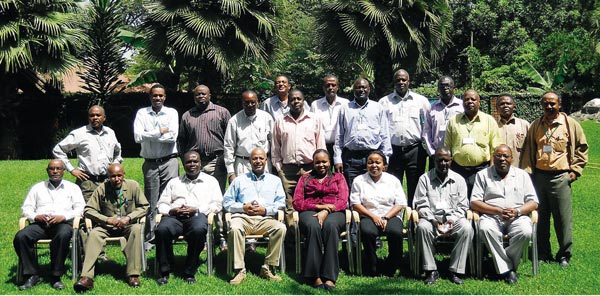
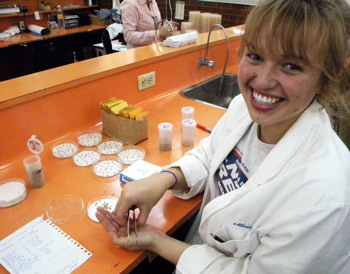 Many scientists begin exploring at a young age; they try to figure out the things they don’t know, ask questions of others, and see how this information might be useful to them in creating new knowledge. The very lucky ones might have a mentor, or at the very least, a place where they are encouraged to cultivate their curiosity and use what they find out to help others.
Many scientists begin exploring at a young age; they try to figure out the things they don’t know, ask questions of others, and see how this information might be useful to them in creating new knowledge. The very lucky ones might have a mentor, or at the very least, a place where they are encouraged to cultivate their curiosity and use what they find out to help others.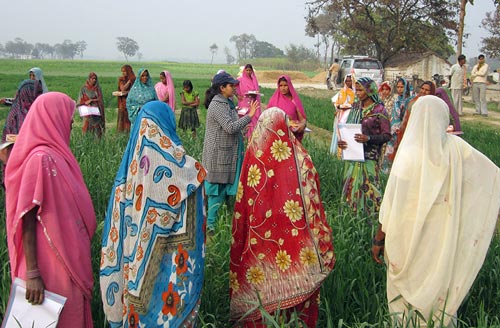 In the continuous effort to increase awareness of wheat biofortification and its use to improve health and quality of life in eastern India, Banaras Hindu University (
In the continuous effort to increase awareness of wheat biofortification and its use to improve health and quality of life in eastern India, Banaras Hindu University (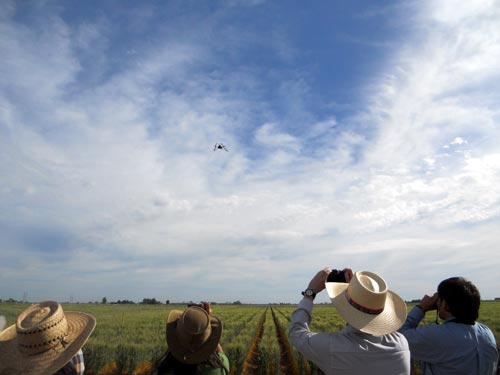 Over 100 stakeholders, scientists, and students from 28 countries were welcomed in Obregon, Mexico, by John Snape, CIMMYT Board of Trustees member, as he opened the 3rd International Workshop of the Wheat Yield Consortium (WYC). The meeting sponsored by SAGARPA (through
Over 100 stakeholders, scientists, and students from 28 countries were welcomed in Obregon, Mexico, by John Snape, CIMMYT Board of Trustees member, as he opened the 3rd International Workshop of the Wheat Yield Consortium (WYC). The meeting sponsored by SAGARPA (through 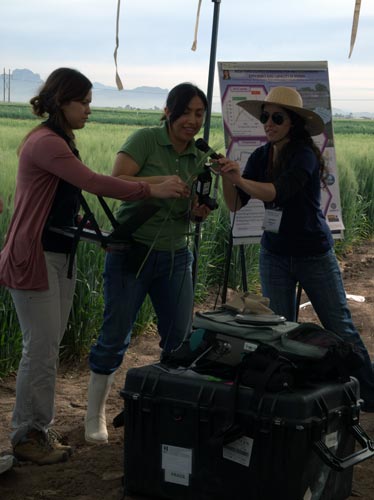 The first day was dedicated to over 20 presentations covering all three major research areas. Chaired by Bill Davies (
The first day was dedicated to over 20 presentations covering all three major research areas. Chaired by Bill Davies (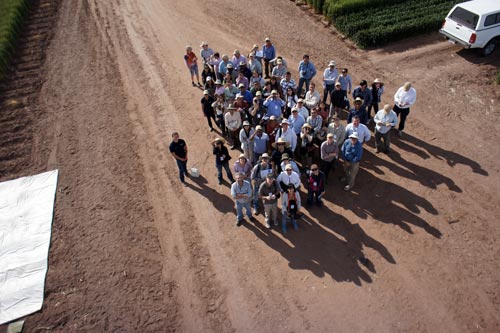
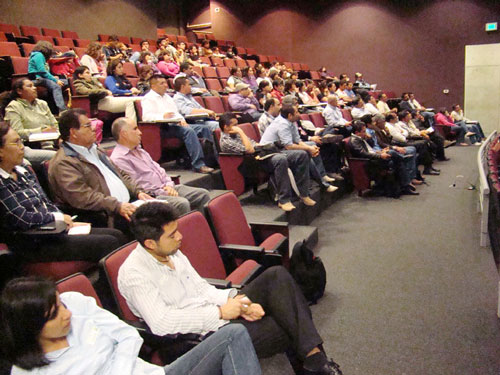 To discuss possible expansion of
To discuss possible expansion of 